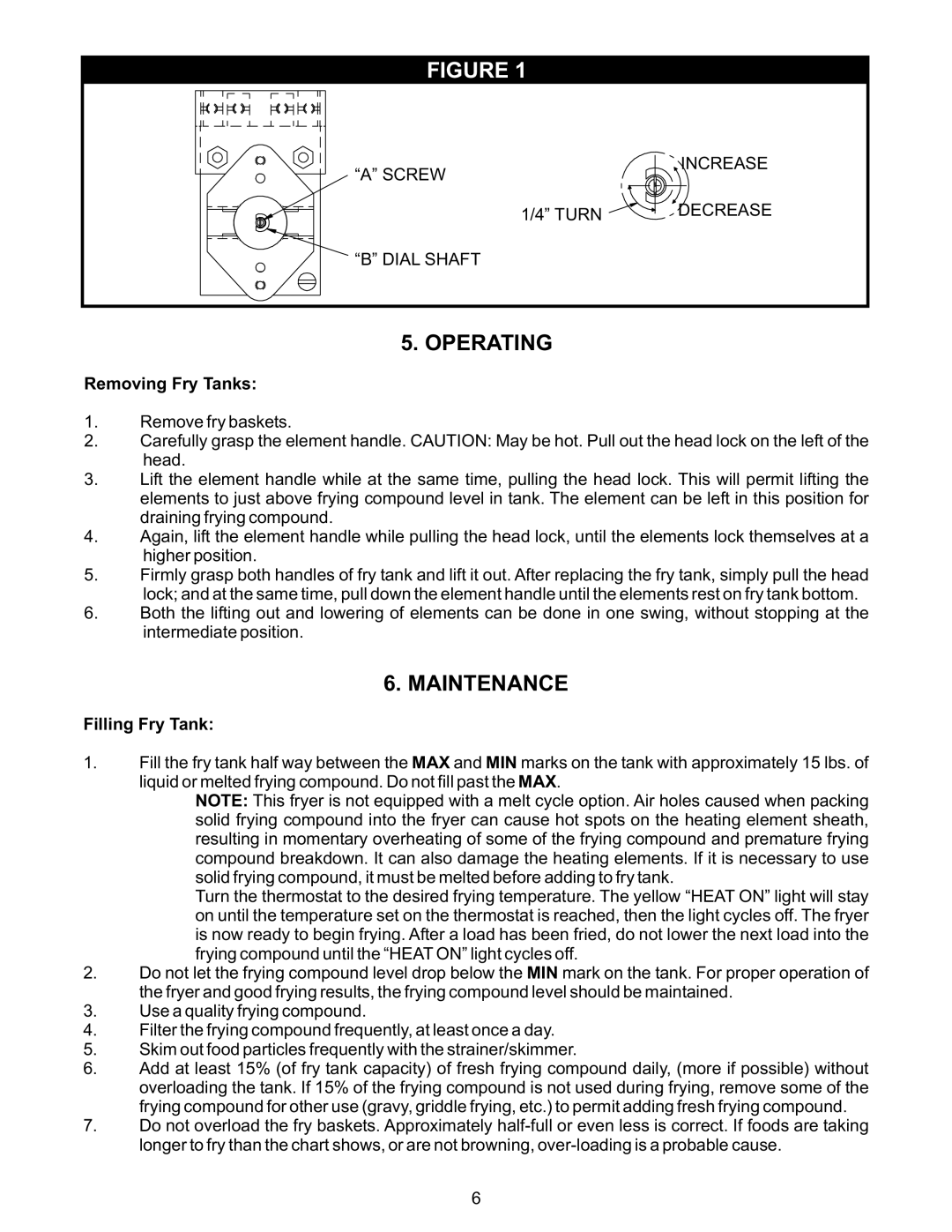EF-15N, EF-30NT, EF-30NTC specifications
The APW Wyott EF-30NT, EF-30NTC, and EF-15N are essential electric countertop fryers that cater to the needs of busy kitchens and food service operations. These fryer models are designed to streamline cooking processes while ensuring high performance, reliability, and efficiency.The EF-30NT and EF-30NTC models are equipped with dual fry tanks, each offering a generous capacity that allows chefs to fry multiple batches simultaneously. This feature is particularly beneficial in fast-paced environments, where time is of the essence. Both models utilize a powerful heating element that can reach high temperatures quickly, ensuring that food is cooked evenly and to perfection. The EF-30NTC model incorporates a convenient thermostat control that allows users to adjust the temperature easily, ensuring consistency across various menu items.
The EF-15N, while slightly smaller in capacity, maintains the same high-quality performance and durability that APW Wyott is known for. It’s designed for smaller kitchens or food trucks where space is limited, yet it still boasts an impressive frying output. All three models feature stainless steel construction, which not only contributes to their durability but also facilitates easy cleaning and maintenance. The stainless steel surface resists tarnishing and is built to withstand the rigors of a commercial kitchen.
One of the standout technologies of the EF series is the cool zone feature integrated into the fry tanks. This innovative design allows excess food particles to settle away from the heating element, reducing the likelihood of burnt residues and improving the overall oil life. This results in cleaner oil, which translates to better-tasting food and reduced oil costs over time.
Safety is a key consideration in the design of these fryers. They come equipped with safety features such as an automatic shut-off function in case of overheating and a built-in grease drain for easy oil disposal. These enhancements not only make the cooking process safer but also optimize operational efficiency.
In summary, the APW Wyott EF-30NT, EF-30NTC, and EF-15N are versatile, efficient, and robust electric fryers designed to meet the demands of modern food service operations. Their innovative features and high-quality construction make them an excellent investment for any kitchen looking to elevate their frying capabilities.

